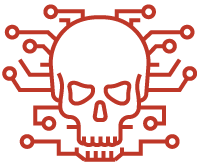Outsourcing IT functions can bring many benefits to your organization. More and more, companies are choosing this path with the outsourcing market in the US hitting $61.3 billion in 2018. However, not every provider delivers, leaving businesses to be compelled to make the switch. But with change comes disruption, and you want a smooth technology transition.

The outsourcing market in the US reached $61.3 billion in 2018.
If you are considering switching IT service providers, there will be a period of adjustment. But it doesn’t have to complicated or cumbersome. What you desire is a smooth technology transition, and in this guide, we’ll be defining the essential steps to ensure that smooth transition.
Transitions should be stress-free and bring benefits to your organization
Your transition should make fiscal sense and provide you with key benefits. The number one reason small businesses outsource is to increase efficiency, according to a recent survey. So, your transition should be efficient as well.
You don’t have to be chained to your managed IT services provider. If they are not performing as expected or don’t have the expertise you need then it’s time for a change. In a survey of decision-makers, 42% of those using outsourced services said they wish they would have spent more time in selecting their provider. That’s nearly half! Sometimes, companies have to course correct when it comes to outsourcing. Make it easy by following these steps.

42% of decision makers using outsourced services say they wish they had spent more time selecting a provider.
Step one: understanding your IT environment
In a transition, you need to understand exactly how your IT environment is functioning and what roles your provider plays versus what your in-house team does. This is a discovery phase of collecting intel to determine what functions need to be passed onto your new provider, including services like IT help desk support, business continuity, network security, and more.
Step two: plan for the handover at end of contract
It may not be financially feasible to transition mid-contract, so it makes sense to wait until the end of your current contract unless the provider is in breach of that contract. By waiting to change at the end of the contract, your incumbent provider will probably be more cooperative as well. You’ll need their cooperation for a smooth transition.
There is a knowledge transfer that needs to happen from the old guard to the new guard. Hopefully, your existing IT support vendor will provide this to your new partner. However, it’s always important to have written documentation about processes, policies, and what actions have been taken during your time with your current provider, including data security protocols.
Step three: hammer out a timeframe
The timeline of the transition is critical to continuing business as usual. It’s also impacted by the outgoing firm’s willingness to help. If you are at the end of your contract, the transition can occur as soon as the contract expires but should be planned for weeks if not months in advance.
It’s the details that matter here because you have to a clear view of everything your current provider has been handling. Work through all the steps of what needs to change hands.
Another important aspect is the projects in process. You’ll need to know what projects are ongoing, such as hardware upgrades or deploying new software. This way, your new provider can understand where you are in the project and take over seamlessly so it doesn’t impact your plans or operations.
Step four: minimize disruption and risk
While you can’t eliminate the disruption that comes with an IT transition, you can mitigate it. Your new provider should have a plan on how to commence the switch. This should include the stages and processes and how disruption and risk will be minimized.
While disruption is certainly important, you’ll want to be even more focused on the possible cybersecurity risks that can happen during a transition. If your current provider is constantly monitoring for threats and something goes wrong in the switchover, your network could be vulnerable. Unfortunately, the US leads the way when it comes to cyberattacks. So, if you leave your system unattended for even one day, it’s possible that you could become the victim of a data breach or malware virus.

If you leave your system unattended for even one day during a transition, you could become the victim of a data breach or malware virus.
During the transition planning, you need to make sure there is no lapse in monitoring your network security so the changeover is smooth and your systems and data are protected.
Step five: manage your resources
Transitioning involves people management for your existing provider, your new provider, and your in-house resources. Ideally, everyone will work together well, but that’s not always the case. That’s because they all have different goals, so you must make a point to ensure that your communication is frequent and clear.
Your old provider may be upset; they are losing business, but that’s when your in-house resources need to manage the relationship. Parting ways doesn’t have to be negative; it’s just what is right for your business.
Empower your in-house staff to work with both providers for a transition with as little bumps as possible. Being honest, transparent, and concise with all parties can improve the entire process.
Change can be hard; transitions don’t have to be
It’s never easy to make changes in your organization. Change can be hard and difficult, but your transition doesn’t need to be. The key is to plan and communicate. With these five steps, you can make things as smooth as possible. Expect minor hiccups along the way because that’s just part of change. But avert any major catastrophes by staying on track with these steps.
Are you ready to make a switch? If so, we’d love to chat with you about our transition strategies. Contact us today to learn more.





